USDOT Thriving Communities Program: St. Louis County, MO
15 minutes Date Launched/Enacted: May 16, 2025 Date Published: May 21, 2025
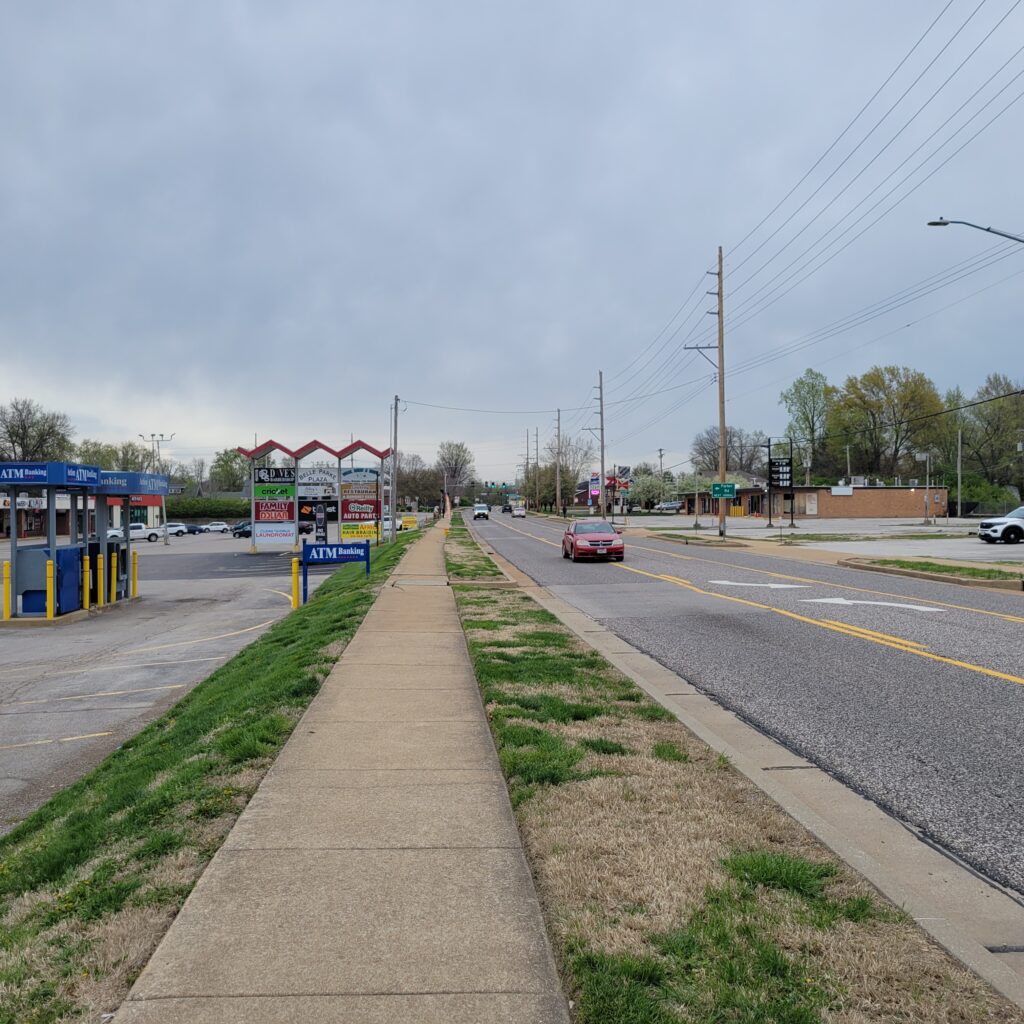
About the Thriving Communities Program (TCP)
The Thriving Communities Program (TCP) funds tailored technical assistance to under-resourced and disadvantaged communities, helping them better access historic infrastructure investments and deliver transformative projects. The USDOT FY 2022 Thriving Communities Program supports 64 communities across the country with access to a team of capacity builders to develop innovative community engagement methods, identify funding opportunities, and grow long-term capacity to develop and deliver transportation projects that strengthen communities.
TCP Complete Neighborhoods Community of Practice
TCP Communities are grouped into three Communities of Practice: Main Streets, Networked Communities, and Complete Neighborhoods. The 15 communities included under the Complete Neighborhoods Community of Practice are:
| Atlantic Beach, SC | Isabela, PR | Santa Cruz, CA |
| Billings, MT | Lansing, MI | St. Louis County, MO |
| Decatur, IL | Lima, OH | Suffolk, NY |
| East Orange, NJ | Providence, RI | Sumter, SC |
| Indianapolis, IN | Roanoke, VA | Waukegan, IL |
The US Department of Transportation (USDOT) selected a capacity building team led by RMI, including: the American Council for Energy-Efficient Economy (ACEEE), Equitable Cities, Nelson\Nygaard, and the Shared-Use Mobility Center (SUMC), to provide technical assistance to these 15 communities.

Community Snapshot
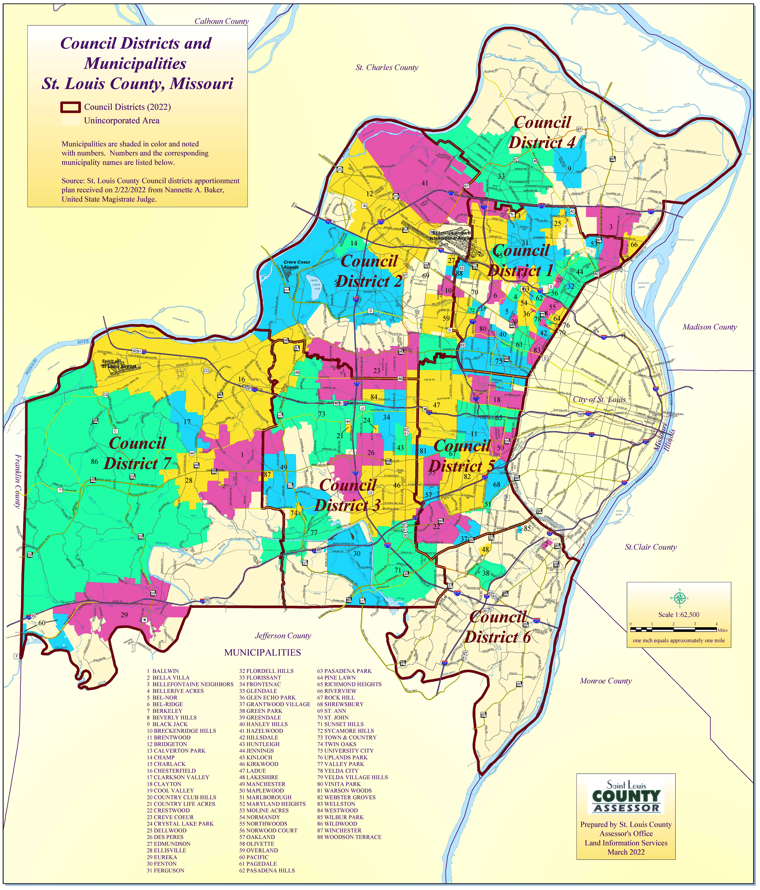
St. Louis County Council Districts and Municipalities. Credit: Saint Louis County Assessor
As of 2023, St. Louis County is home to some 987,000 residents, down from more than one million as of the 2020 census. Population decline is an ongoing struggle for both the County and neighboring City of St. Louis, which lies entirely outside of county lines. In St. Louis County, 88 distinct municipal governments, ranging in population from less than 100 to more than 50,000, contribute to the area’s deep political fragmentation. A long history of racial segregation in the region has led to large discrepancies in income and quality of life between white and Black residents, with communities in northern St. Louis County (“North County”) suffering from historic disinvestment and underfunded public services.
With this regional history in mind, St. Louis County applied to participate in the Thriving Communities Program to expand technical capacity and increase local collaboration between the county and two of its core partners, the City of St. Louis and the St. Louis Economic Development Partnership (STL Partnership). This new focus on building capacity and improving interagency collaboration was noted as especially urgent due to a major upcoming new development slated for North County: the 400+ acre expansion of the St. Louis Zoo dubbed “WildCare Park.”
During the program, representatives from the county, city, and STL Partnership—the TCP core team for St. Louis—convened regularly to advance a workplan focused on ensuring that North County communities can access and benefit from this new civic destination in an equitable, safe, and resilient way.
Key Initiatives
WildCare Park is set to open in the Spanish Lake community, an unincorporated place within North County, in 2027, bringing with it an anticipated $660 million impact on the regional economy over the next decade. The WildCare Park site is located on the outskirts of the county, accessed by two-lane county roads that are subject to flooding and lack public transit or greenway facilities. The new Zoo facility is designed to provide a wild habitat and large dedicated conservation center for endangered species. It is in a low-density agricultural area, but the neighboring Spanish Lake community is just two miles from WildCare Park’s main entrance and is poised to be an epicenter of the facility’s regional impact.
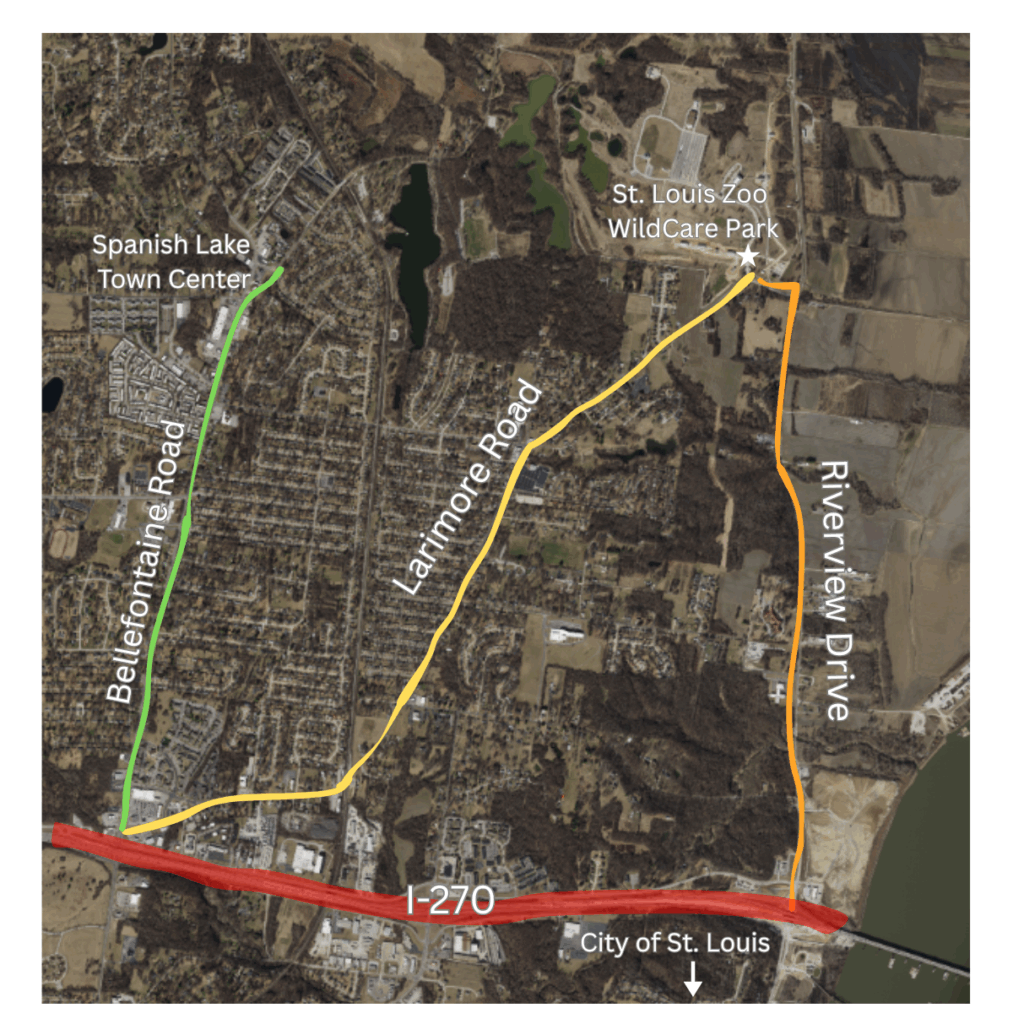
Map of Spanish Lake showing the location of the new zoo facility. Credit: ACEEE
Given this context, the TCP core team was interested in exploring how to advance the Spanish Lake community’s adopted vision for growth, the 2021 Spanish Lake Town Center Master Plan, while also expanding on the scope of that vision to study ways to enhance the resilience of the area’s transportation network. The team convened regularly to coordinate on four key initiatives through TCP:
- Examining resilience and multimodal infrastructure improvements to Riverview Drive, a county collector road leading to the Park’s entrance from the nearby interstate (I-270)
- Assessing ways to support the implementation of the Spanish Lake Town Center Master Plan, with a particular focus on quick and low-cost transportation improvements for Bellefontaine Road, the main commercial corridor of the Town Center and closest commercial district to WildCare Park
- Studying opportunities for expanding public transit service in Spanish Lake
- Reviewing available financing mechanisms to support new transportation investments across Spanish Lake
Key Partners
As introduced above, the TCP Core Team in St. Louis was formed by representatives from St. Louis County (Public Works/Transportation, County Planning, and the County Executive’s Office), the City of St. Louis (Office of Sustainability), and the St. Louis Economic Development Partnership (Community Investment Division). With the county as the main community contact, partners from the City of St. Louis helped ensure that future improvements to Riverview Drive, which transitions from city to county jurisdiction en route to WildCare Park, are closely coordinated with relevant city plans.
Similarly, core team members from the STL Partnership helped guide coordination with the St. Louis Zoo and inform work around economic development initiatives and potential improvements to Bellefontaine Road consistent with the Spanish Lake Town Center Master Plan. Given its extensive work in the North County area and direct involvement in the town center plan as a steering committee member, the STL Partnership also directed public engagement efforts in Spanish Lake related to the TCP workplan.
Finally, other important local stakeholders engaged in discussions related to TCP activities include: Great Rivers Greenway, the St. Louis Zoo, St. Louis Metro/Bi-State Development, St. Louis County Commission District 4 office, Trailnet, North County, Inc., the East-West Gateway Council of Governments, and the Spanish Lake Community Association.
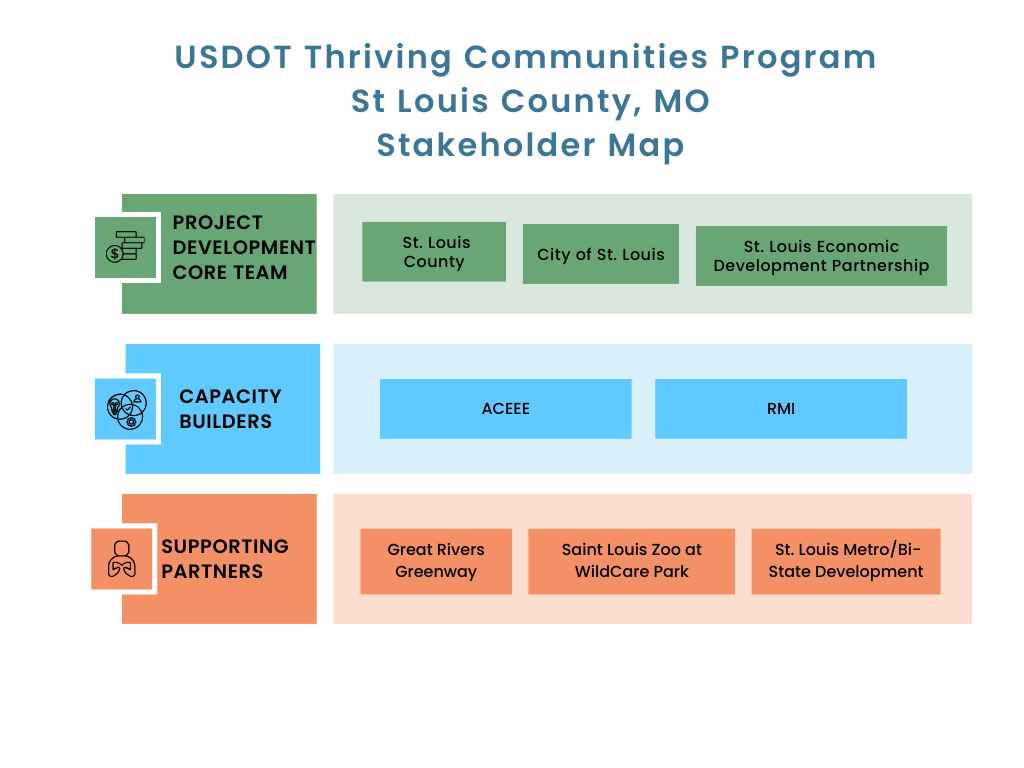
Stakeholder Map. Credit: SUMC
Activities through the Thriving Communities Program
WildCare Park will introduce many new opportunities for economic development for the surrounding Spanish Lake community, but the challenge will be ensuring that its impact is synergistic with the community-led vision for the area and that public agencies can collaborate to implement improvements to the existing network of transportation facilities serving the remote location. Through TCP, several targeted activities helped address this challenge.
Exploring resilience and multimodal improvements to Riverview Drive
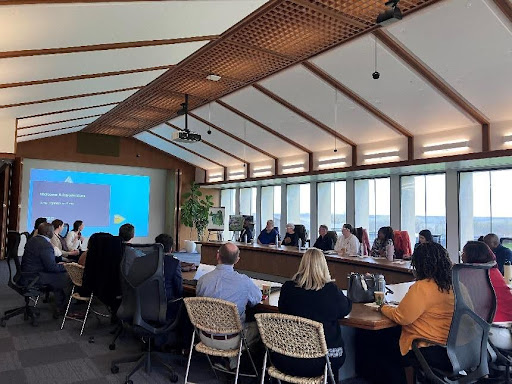
Riverview Drive Stakeholder Meeting. Credit: STL Partnership
Riverview Drive is one of two county roads that leads to the park entrance from the south, the origin of trips to the park for most future visitors and employees. Given its proximity to the Mississippi River floodplain and low-lying condition, Riverview Drive currently experiences flooding during major rain events, sometimes to the extent that the corridor becomes impassable. There are no facilities on Riverview Drive for non-motorized travelers, even though the St. Louis Riverfront Trail, a major greenway facility for the region, follows Riverview Drive south of I-270 and currently terminates at the Chain of Rocks Park, just 2.5 miles from the entrance to WildCare Park.
Strategic planning for improvements to this corridor in recognition of the opening of WildCare Park has been a major focus of TCP activities. A direct funding contract through TCP allowed for a local multidisciplinary transportation planning and engineering firm, CBB Traffic, to lead a corridor study for Riverview Drive, assessing the major challenges for resilience and multimodal access for the road and preparing a set of alternative concepts, with high-level cost estimates, for future improvements that can mitigate these challenges. In April 2025, the Capacity Builder team and local leads met with more than two dozen representatives from local public agencies and community organizations to discuss findings and initial recommendations from this corridor study.
During this convening, the Capacity Builder team facilitated a conversation between local stakeholders with differing perspectives on future priorities for transportation improvements, offering clarity and expert insights on navigating planning challenges in a large region, where resilience improvements for one section of Riverview Drive are just one of many needs competing for funding from a limited transportation budget.
Supporting implementation of the Spanish Lake Town Center Master Plan
TCP also provided an opportunity for local partners to revisit the 2021 Spanish Lake Town Center Master Plan with new energy and a fresh perspective on how to implement its bold vision through an incremental, coordinated approach. As the lead capacity builder liaison for the St. Louis team, ACEEE conducted a detailed review of the plan with an eye toward implementation and made recommendations for low-cost, quick, and impactful improvements to Bellefontaine Road, the heart of the Town Center district.
These improvements, which St. Louis County can begin to implement in the near term, will lay the groundwork for future land use updates that align with the plan’s vision for “holistic redevelopment.” From access management policies and installation of high-visibility mid-block crosswalks, consistent with Federal Highway Administration (FHWA) recommendations for proven safety countermeasures, to wayfinding signage systems and opportunities for public art, these low-cost efforts will transform Bellefontaine Road, spur investment, and create a safer and more pleasant pedestrian environment to increase foot traffic at existing business and attract new businesses to the corridor.

Public art at the intersection of Larimore Road, Trampe Ave., and Madrid Ave. near the Spanish Lake Town Center. Credit: ACEEE
The Capacity Builder team convened St. Louis County Public Works – Transportation, St. Louis County Department of Planning, and the STL Partnership to review recommended improvements for Bellefontaine Road. After this meeting, the St. Louis County staff teams agreed to explore a field test/trial run of access management policies on Bellefontaine Road and to collaborate on ways to kick off the upcoming Spanish Lake Small Area Study (being led by St. Louis County Planning as a follow up to the comprehensive planning process) with a demonstration project in line with recommendations prepared through TCP.
Exploring opportunities for new public transit service in Spanish Lake
The Capacity Builder team brought St. Louis County, St. Louis Metro, and the St. Louis Zoo together for the first time in over a year to discuss the question of public transit service to WildCare Park, recognizing that the site will be both a tourist attraction and a major new employment destination in North County.
While St. Louis Metro has limited resources for introducing a brand-new service, the coordination call between these agencies revealed opportunities for future planning, including highlighting the existing microtransit zone in North County as a short-term solution while longer-term route studies and financial planning identify potential new service opportunities. With research support from the Capacity Builder team, summarized in a detailed memo, St. Louis County and the St. Louis Zoo have a better understanding of the challenges and opportunities related to public transit operations in Spanish Lake and are more prepared to effectively coordinate with their partners at St. Louis Metro.
Research to support financing and implementation of transportation improvements
Between major projects on Riverview Drive, new public transit services, and short- and long-term upgrades to the Bellefontaine Road Town Center, the transportation improvements for North County that were advanced through the TCP workplan will require dedicated funding. ACEEE conducted a review of potential financing mechanisms available to support these goals, including tax increment financing, state and federal funding, transportation development districts, user fees, and philanthropic contributions.
The TCP core team used this research, along with takeaways from the multiagency meetings held during the April 2025 site visit, to chart the next steps for ongoing coordination in preparation of WildCare Park’s 2027 opening. As an outcome from TCP, the STL Partnership launched an interdepartmental working group with St. Louis County Planning and St. Louis County Public Works – Transportation to maintain coordination on planning and project implementation in Spanish Lake. The working group intends to meet monthly with County leaders and other regional stakeholders to determine next steps for prioritizing and financing new projects in Spanish Lake, working to make the community’s vision for holistic revitalization a reality.
Public engagement
The four main TCP activities described above were all built upon with public engagement efforts focusing on Spanish Lake and other communities surrounding the Riverview Drive corridor. With a TCP direct funding contract, the STL Partnership led public engagement efforts in support of the workplan. Stakeholder engagement was an important component of the Riverview Drive corridor study from CBB Traffic as well, with four stakeholder meetings to inform the study taking place between December 2024 and May 2025.
In April 2025, two public open houses took place: one in Spanish Lake, which focused on gathering input on community priorities for transportation improvements to Bellefontaine Road, and one in northern St. Louis City at Chain of Rocks Park, which focused on collecting input on potential improvements to Riverview Drive. These in-person events were supplemented with online engagement opportunities, including two surveys, which were distributed via social media channels, newsletters, and local publications.

Staff from the STL Partnership reviews public comments received at the April 9 public open house in Spanish Lake. Credit: ACEEE
Across these two events, 37 individuals shared their input on transportation needs and priorities in this part of North County. In Spanish Lake, residents expressed excitement for the upcoming opening of WildCare Park and welcomed the new economic development that is anticipated to spur from the park to support their community’s Town Center. Residents also shared concerns about retail vacancies, litter, and speeding vehicles on Bellefontaine Road while calling for more public art and new destinations to be brought to the area. Along Riverview Drive, residents expressed support for new multimodal facilities continuing north along the corridor, with concerns about safe and accessible crossings under the I-270 interstate overpass.
April 2025 Site Visit
In April 2025, the Capacity Builder team conducted a site visit to St. Louis to meet with local leads on recommendations prepared through TCP. As discussed above, the site visit included a meeting with county staff to discuss recommendations for Bellefontaine Road, a stakeholder meeting for the Riverview Drive corridor study, a meeting with public agency staff to discuss project financing and implementation, and a public meeting in Spanish Lake to gather input on priorities for Bellefontaine Road. Several themes emerged from these conversations:
- Local leaders in the St. Louis region should continue regular coordination on transportation priorities in Spanish Lake, and a new working group provides the forum for that dialogue. During discussions with stakeholders on potential improvements for Riverview Drive, several people expressed concern about viewing this road as a primary point of entry to the new Zoo site, while others highlighted the benefits of using this corridor provided improvements are made. The TCP convening provided a chance for staff across nearly a dozen different public agencies and stakeholder organizations to engage in a discussion about how best to prioritize these and other planning priorities for the area around WildCare Park. Coming out of this conversation, local organizations are better positioned to coordinate planning and funding for future transportation projects in Spanish Lake. With support from the Capacity Builder team in May 2025, the STL Partnership is taking the lead on next steps for this coordination by spearheading a Spanish Lake Working Group comprised of key St. Louis County staff and other stakeholders from the site visit convening. The working group plans to convene monthly and tackle important topics highlighted through TCP to move projects toward implementation.
- Low-cost, iterative improvements to the Bellefontaine Road corridor can begin to move forward in the short term to support the bold redevelopment vision of the Spanish Lake Town Center Master Plan. As a long-term vision for the community, the Spanish Lake Town Center Master Plan can seem daunting for local leaders to implement. The TCP site visit offered an opportunity for productive interdepartmental dialogue with St. Louis County planning and engineering staff to review recommendations for short-term, low-cost, incremental improvements that can act as stepping stones toward long term redevelopment. Breaking down the plan’s transportation elements into bite-sized pieces helped local staff see new possibilities for the corridor, and as an outcome of TCP county officials are moving forward with plans to pilot for temporary improvements where there were previously no concrete next steps for implementing the Town Center plan.
Summary of TCP Impact
One of the most valuable aspects of participation in TCP for the St. Louis community was that the program created a forum for regular, sustained coordination between local agencies that have previously struggled with collaboration. Being able to bring together city and county planning professionals, as well as local experts in economic development, for regular bi-weekly calls strengthened the institutional culture of collaboration between these agencies and catalyzed new working relationships that will endure beyond the program.
On the heels of TCP, public sector staffers across agencies in St. Louis are more equipped to tackle the region’s problems in a collaborative and incremental manner. With the newly formed Spanish Lake Working Group focused on bringing holistic, community-centered redevelopment to Spanish Lake that is supported by strategic transportation investments, the community is well-poised for success. Upcoming pilots of access management techniques and placemaking initiatives will further help catalyze actions to bring the vision for a reinvigorated Bellefontaine Road corridor to fruition.
Related Resources
Capacity building efforts through the Thriving Communities Program will continue until May 2025. The Capacity Builder team will conduct more technical assistance activities and will update this case study as the program progresses.